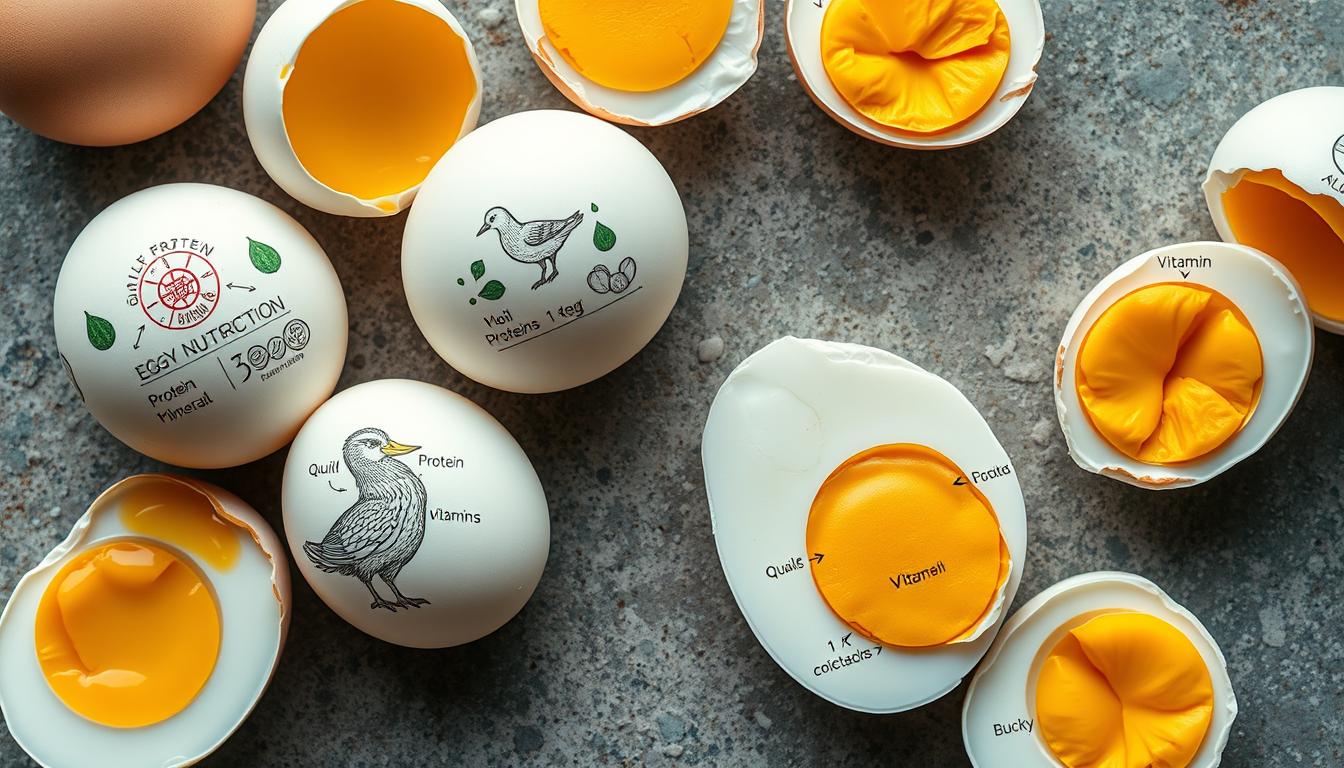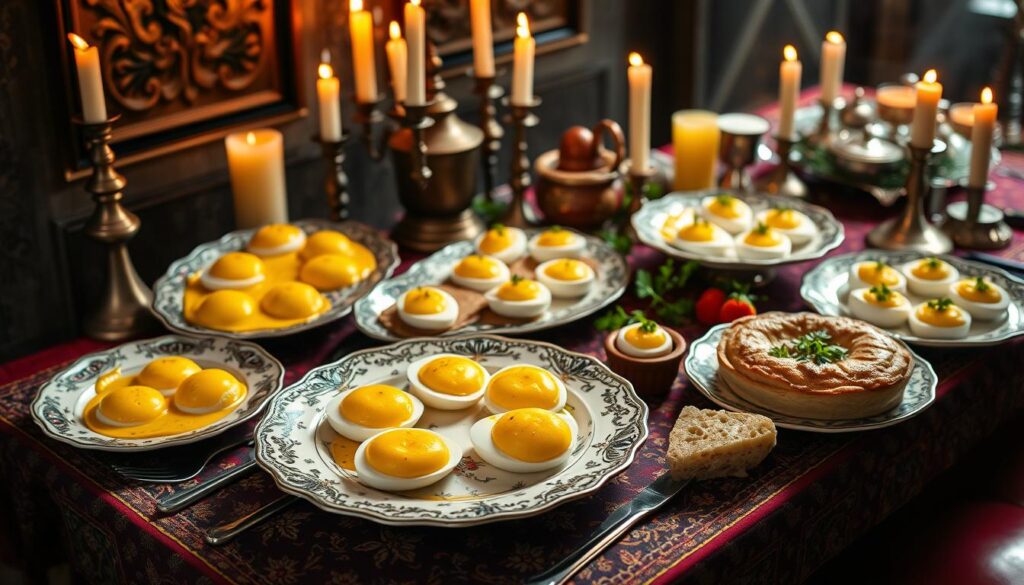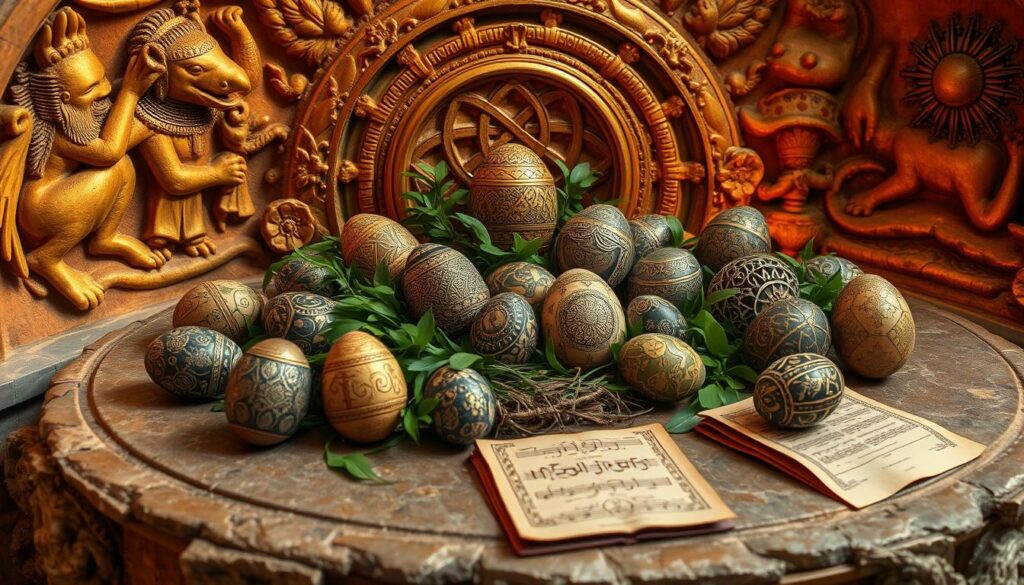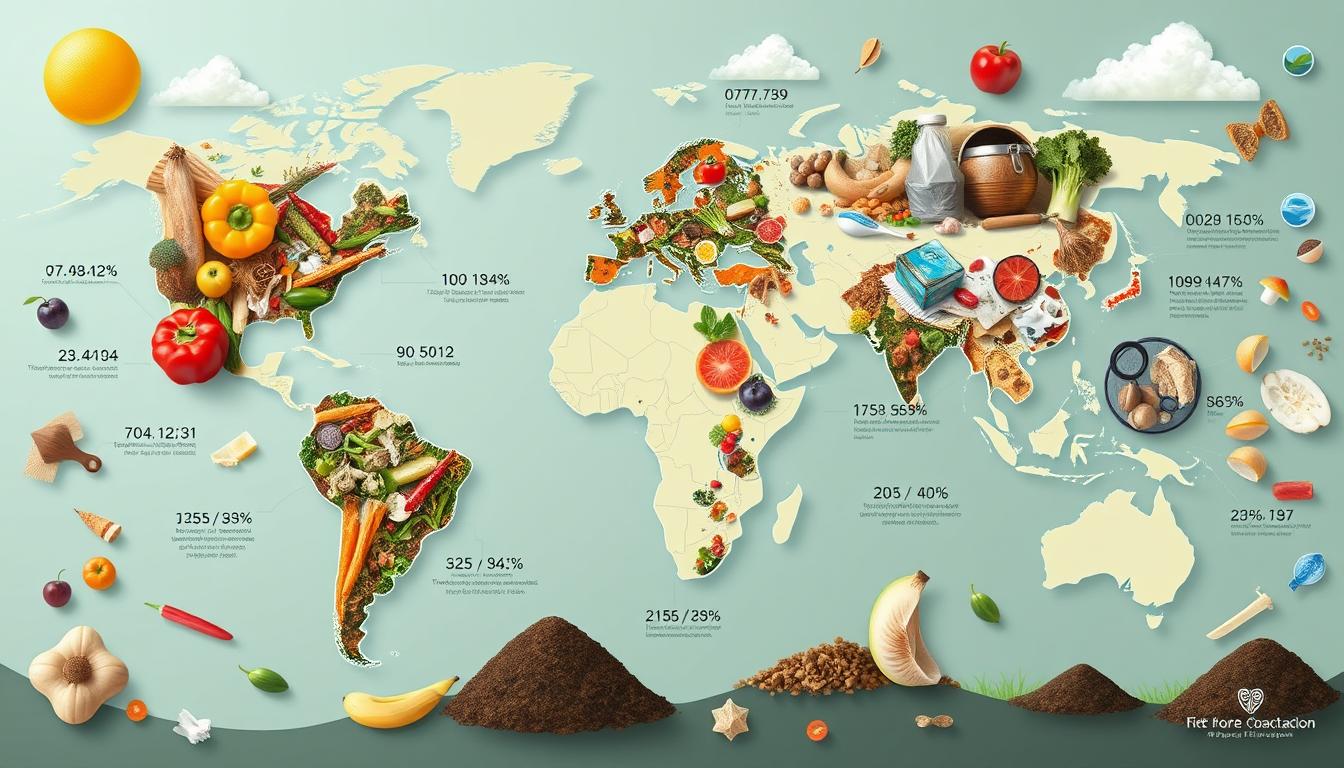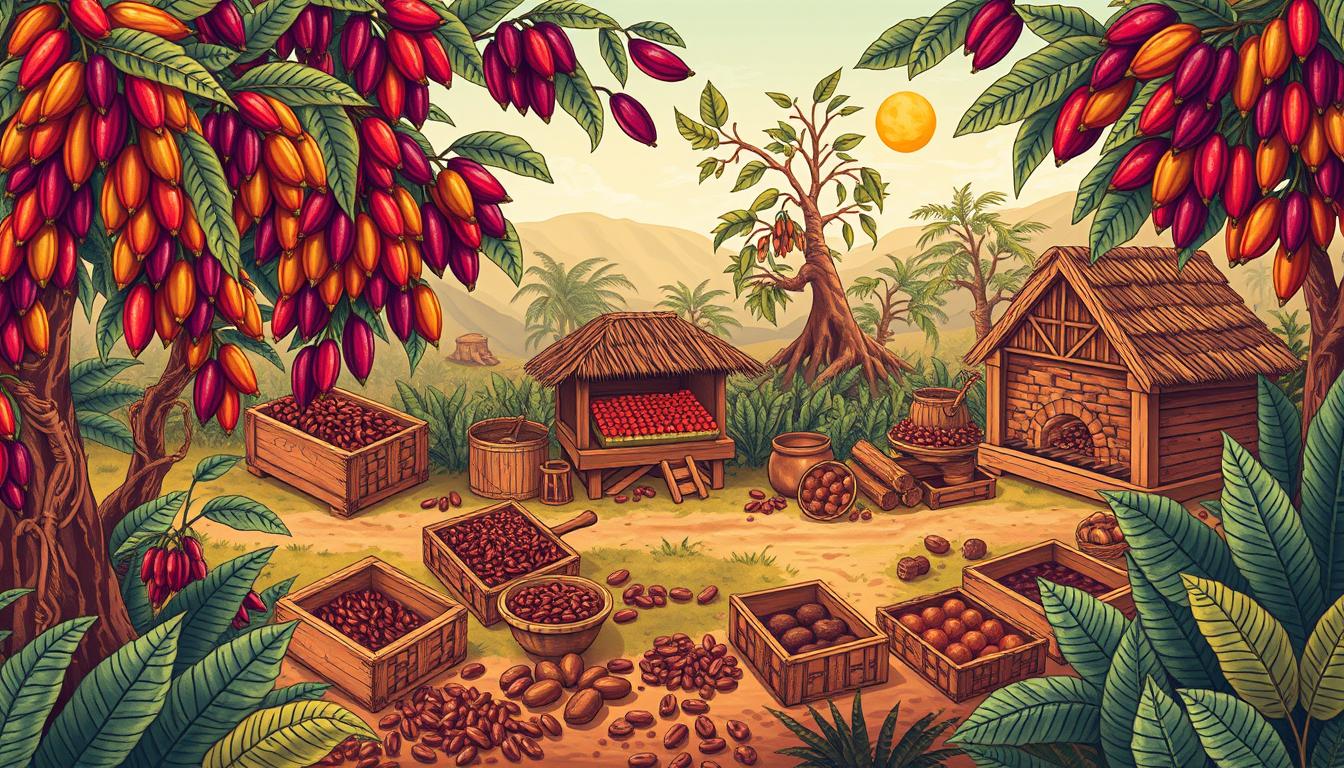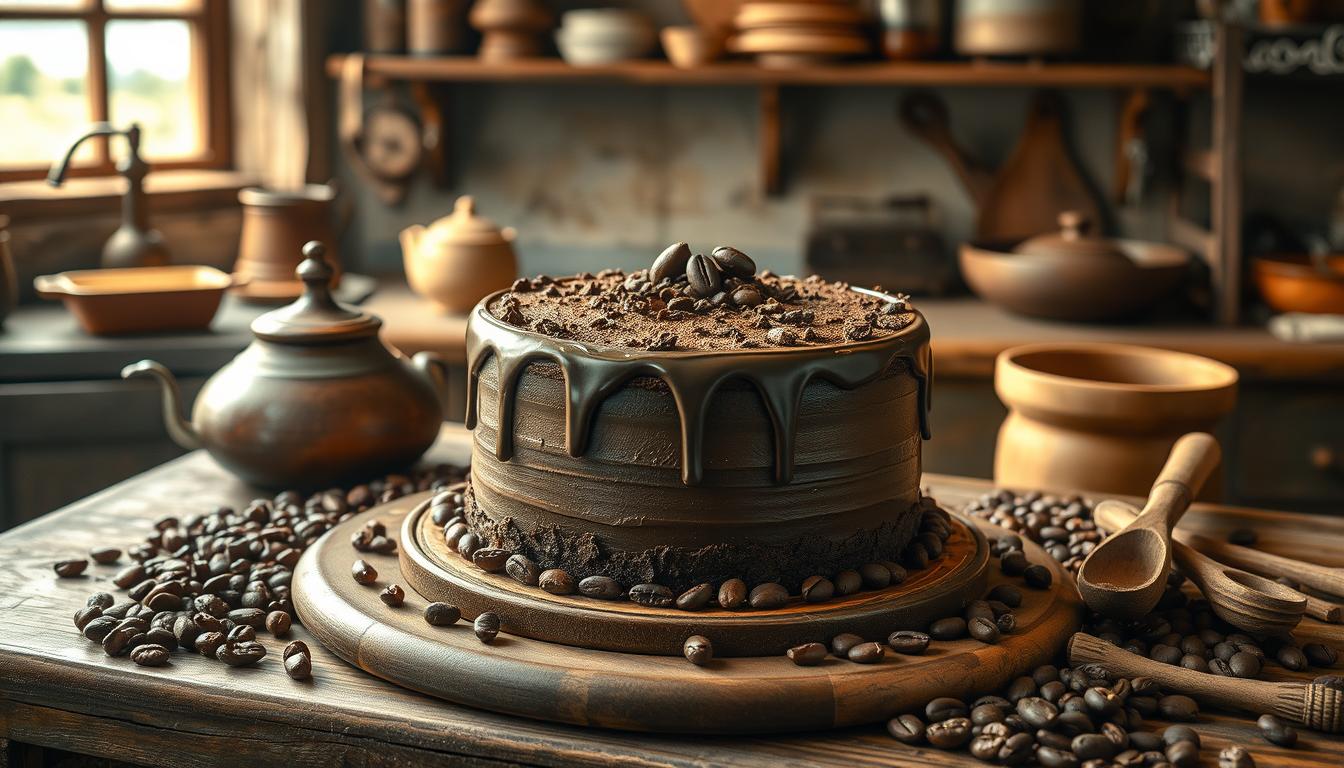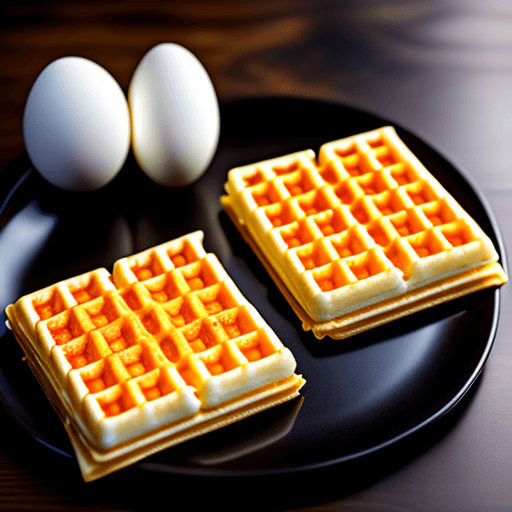Did you know the average American eats about 19 pounds of eggs every year? Eggs are tasty and packed with nutrients like protein and vitamins. They come in different colors, but every egg starts as white.
Eggs have a special way of forming inside a chicken. They also carry deep meanings in many cultures. But, eggshell color doesn’t tell you how nutritious the egg is. It’s just a sign of the hen’s genetics.
Chickens lay eggs more often and in bigger numbers than ducks or turkeys. The UK alone lays about 11 billion eggs a year. They are 86% self-sufficient in egg production. This shows how vital eggs are and how hard egg-laying hens work.
Key Takeaways
- Eggs are nutrient-dense, providing high-quality protein and essential vitamins and minerals.
- Eggshell color is determined by the hen’s genetics and does not affect nutritional value.
- The average American consumes around 19 pounds of eggs per year.
- Chickens are the most prolific egg layers among poultry.
- The UK produces an average of 11 billion eggs annually and is 86% self-sufficient in egg production.
Table of Contents
- 1 Famous historical figures and their connection to eggs
- 2 Ancient egg consumption and symbolism
- 3 Eggs by the Numbers: Shell-Shocking Statistics
- 4 Anatomy of an egg: amazing structural design
- 5 How eggs are formed inside a chicken: a 24-hour miracle
- 6 Why eggs come in different colors: genetics explained
- 7 Factors affecting egg size and shape
- 8 World records for largest and smallest eggs
- 9 Understanding egg expiration dates: the truth about shelf life
- 10 The 100 folds in a chef’s hat representing egg cooking methods
- 11 Amazing tips for identifying fresh eggs
- 12 How to properly store eggs for maximum freshness
- 13 World’s most expensive egg dishes
- 14 Common misconceptions about eggs and cholesterol
- 15 Unusual egg-related customs around the world
- 16 Eggs in beauty treatments and folk remedies
- 17 Unusual and amazing egg recipes from different cultures
- 18 Source Links
Famous historical figures and their connection to eggs
Eggs have been a big part of history, loved by many famous people. From ancient times to today, eggs have been a favorite dish around the world. People have eaten eggs from many birds, like plovers and ducks, in different cultures.
The history of eating eggs goes back to 3200 B.C.E in India. The Romans loved peafowl eggs, while the Chinese enjoyed pigeon eggs. Apicius, a Roman cookbook, often talks about eggs, showing they were slow to become popular.
For ages, eggs have been used in baking, helping hold breads and cakes together. Eggs were seen as symbols of fertility and life, used for magic and to predict the future in many places. Decorating eggs is an old tradition in Eastern Europe and beyond, even before Christianity.
Eggs were seen as a sign of spring and the sun’s return before they became linked to Christ’s resurrection. People decorate eggs with many materials, including wood, from different birds. Each region has its own way of decorating eggs, like Kraslice and Pysanky. Peter Carl Fabergé made fifty eggs for the Romanovs between 1885 and 1916, some of which are in museums today.
Ancient egg consumption and symbolism
Eggs have been a key part of human diets for thousands of years. The first signs of egg eating date back to the Neolithic period. Many cultures around the world have raised birds for their eggs. China and Egypt started eating eggs before 1400 B.C.E.
The word “egg” comes from an ancient Indo-European word related to “bird”.
Different types of eggs, like ostrich and chicken, have been eaten for ages. By 3200 BCE, India had birds just for eggs. Columbus brought the first domesticated poultry to North America in 1493.
Eggs have more than just nutritional value. They symbolize fertility, rebirth, and new starts. This is why eggs are used in religious ceremonies, art, and stories worldwide.
Eggs are a key food in many cultures. They are full of important nutrients like selenium, vitamin D, and iron. These nutrients help protect our eyes from diseases.
Today, hens can lay up to 250 eggs a year. Each egg takes about 24 to 26 hours to make.
| Country | Egg Consumption History |
|---|---|
| China | Records show evidence of egg consumption before 1400 B.C.E. |
| Egypt | Records show evidence of egg consumption before 1400 B.C.E. |
| India | Domesticated jungle birds for egg production by 3200 BCE |
| North America | First domesticated poultry introduced in 1493 by Columbus |
Eggs by the Numbers: Shell-Shocking Statistics
The global egg industry is huge, producing billions of eggs every year. Egg production statistics show how big this industry is, with countries all over the world playing a part. Let’s dive into the numbers that make this industry so amazing.
Global Egg Production and Consumption
The egg industry is global, with the United States producing over 111 billion eggs in 2020. China, the biggest egg producer, made 663 billion eggs that same year. These numbers show just how big egg production is worldwide.
Egg consumption data shows interesting trends. In 2022, Americans ate more than 279 eggs on average. But, egg eating habits vary a lot from country to country.
Average Egg Consumption per Country
Looking at egg consumption data, we see big differences between countries. The United States has a high egg consumption, but other countries eat even more. Japan, for example, eats an average of 320 eggs per year. China also eats a lot, with an average of 282 eggs per person annually.
On the other hand, countries like India and Indonesia eat much fewer eggs. They average around 63 and 87 eggs per person per year, respectively. These differences are due to many factors, including culture, economy, and diet.
| Country | Average Egg Consumption per Person per Year |
|---|---|
| Japan | 320 |
| China | 282 |
| United States | 279 |
| Mexico | 352 |
| Russia | 260 |
Economic Impact of the Egg Industry
The egg industry has a big economic impact, adding billions of dollars to the global economy. In the United States, the egg industry brings in over $10 billion each year, supporting thousands of jobs. It affects many areas, from farmers to retailers.
The economics of the egg industry also show the need for efficient production. Things like feed costs, hen housing, and disease control are key to keeping costs down for producers. As demand for eggs grows, the industry must find ways to stay sustainable and affordable.
Anatomy of an egg: amazing structural design
The egg’s design is a marvel of nature’s engineering. It protects and feeds the growing embryo. The eggshell is made of tiny calcium carbonate crystals, with 7,000 to 17,000 pores. These pores let in air and keep out threats.
Underneath the shell, there are two membranes. The outer one stops bacteria and lets oxygen in. The inner one is the strongest layer. It’s made of keratin, like in human hair.
As eggs cool, air cells form. This lets them breathe. The size of these cells shows how old the egg is. They usually form at the egg’s pointed end.
The egg white is full of proteins that are shaped like balls. When beaten, these proteins spread out, trapping air. This makes soufflés and meringues light and fluffy. The proteins have both water-loving and water-fearing parts.
The egg yolk is packed with nutrients. It also helps mix oil and water in recipes like hollandaise and mayonnaise.
| Egg Component | Function |
|---|---|
| Shell | Protection, gas exchange |
| Outer Membrane | Bacterial barrier, oxygen passage |
| Inner Membrane | Strongest protective layer |
| Albumen (Egg White) | Protein source, structure |
| Yolk | Nutrient source, emulsifier |
The egg’s design is a true marvel of nature. Each part works together to protect and feed the embryo. From the shell to the yolk, the egg’s anatomy is a testament to nature’s genius.
How eggs are formed inside a chicken: a 24-hour miracle
The egg formation process in a chicken’s reproductive system is amazing. It happens in just 24 hours. This journey is like a well-organized assembly line, with each step done perfectly.
Chickens are part of nearly 10,000 bird species that lay eggs. Female birds, including chickens, can keep sperm for days or months. This means they can lay both eggs that are ready to hatch and those that aren’t. Unfertilized eggs are safe to eat, while fertilized ones can hatch into chicks if incubated.
The egg-making starts before it’s laid. It includes fertilization, cell division, and sorting cells into groups. Once laid, the egg waits for incubation to start growing.
During incubation, the embryo goes through incredible changes:
- At 24 hours, the start of eye formation is seen.
- By the second day, the heart starts beating, creating two blood systems.
- On the eighth day, the chick’s beak starts to harden.
- Feathers and feather tracts appear on the tenth day.
- By the fourteenth day, the chick’s claws start forming as it gets ready to hatch.
- On the seventeenth day, the beak turns toward the air cell for hatching.
- By the twentieth day, the chick is ready to hatch, with the beak breaking the air cell and lungs starting to breathe.
The eggshell is made strong with calcium, protecting the egg. Even though the shell gets weaker, it takes hours or days for the chick to break out. After 21 days, the chick comes out, ending the hatching process.
Birds wait to start incubation until all eggs are laid for the best hatching conditions. Some birds, like the goldcrest, have special adaptations. The female goldcrest’s eggs are 18 percent of her body weight, and she has “hot” legs to keep the eggs warm. You can learn more about how to store eggs properly to enjoy this amazing process.
Why eggs come in different colors: genetics explained
Ever wondered why eggs come in so many colors? From white and brown to blue and green, it’s all about the hen’s genes. Chicken breeds and egg color are closely tied, with certain breeds laying eggs in specific colors.
White eggs come from chickens like Leghorns, which lay more white eggs than Orpingtons’ brown ones. On the other hand, breeds like Rhode Island Red and Sussex lay brown eggs. This is because of genes that add different amounts of protoporphyrin to the eggshell.
Chickens with white earlobes lay white eggs. Those with colored feathers and darker earlobes lay colored eggs. This link between earlobe color and egg color is quite interesting.
Some breeds, like Araucanas and Old Cotswold Legbar, lay blue and green eggs. This is because of special genes that deposit biliverdin in the eggshell. Ameraucana birds, for example, have a pigment called oocyanin that makes about 5% of their eggs blue.
Crossbreeds like ISABELL and ISA Tinted lay tinted eggs. Marans chickens, known for their dark brown eggs, have a lot of porphyrins in their eggshells.
Brown and white eggs are common because of selective breeding. But blue eggs are becoming more popular in special markets. Easter eggers, for instance, lay eggs in colors like blue, green, pink, or a mix.
The color of an egg comes from enzymes that change protoporphyrin-IX to biliverdin. The color gets more intense as the shell forms. Genes like ALAS1 and SLCO1B3 are key in eggshell color. A virus called EAV-HP affects SLCO1B3 in blue-shell-laying hens.
Even though eggs come in different colors, there’s no big difference in taste or quality. So, whether you like white, brown, or olive-green eggs, it’s all thanks to the hen’s amazing genetics.
Factors affecting egg size and shape
Many things can change how big and shaped an egg is. The hen’s age and breed, and what she eats and where she lives, all play a part. About 60% of the difference in egg size comes from things like food and how the hen is kept. In the U.S., eggs are sorted into six sizes: peewee, small, medium, large, extra-large, and jumbo, based on their weight.
What a hen eats during egg-laying time can affect egg size. Foods like energy, certain amino acids, and fats can make eggs bigger. Most recipes use large eggs, which weigh about 24 ounces per dozen. In America, people like bigger eggs, so that’s what farmers often make.
Where and how a hen lives also matters. Eggs get smaller in hot weather. If it’s too hot, over 27 degrees Celsius, eggs are smaller. Stress, sickness, injury, or fear can also make hens eat less and lay fewer eggs. The light a hen gets can affect when she starts laying eggs and how big they are.
The hen’s weight is key for egg size. Heavier hens lay bigger eggs and more of them. Other things like the hen’s breed, how big her bones are, what she eats, and the light she gets also matter. When a hen starts laying eggs affects how big they are, and it’s best to start when she’s the right weight and size.
Fun fact: It takes about 25 hours to make an egg in the hen’s body.
World records for largest and smallest eggs
Eggs vary greatly in size, from tiny to huge. The largest chicken egg ever recorded weighed 454 grams. On the other hand, some bantam breeds lay the smallest chicken eggs.
The ostrich lays the world’s largest bird egg, weighing about 2% of the mother’s body.
The kiwi, a bird from New Zealand, lays eggs that are unusually large. Kiwi eggs are six times bigger than eggs from similar-sized birds. They make up about 20% of the mother’s body, compared to a human baby at full term, which is only 5%.
A female kiwi can lay up to 100 of these huge eggs in her lifetime.
Kiwi chicks hatch fully feathered and independent. This is because their eggs are 65% yolk. The kiwi’s large egg size and special feathers evolved without land mammal predators in New Zealand before humans arrived 1000 years ago.
Interestingly, the kiwi’s egg size may have evolved separately from the bird’s body size. Adult bird characteristics change over time, but egg size might not.
Humans have also set impressive records with eggs. The furthest distance an egg has been thrown and caught is 98.51m. The most omelettes made in 30 minutes is an amazing 427.
It takes a hen 24 to 26 hours to lay one egg. The average person eats 173 eggs a year. These records are even more impressive given these facts.
Whether you’re amazed by the culinary versatility of eggs or their incredible sizes, eggs are truly fascinating. From the ostrich’s huge egg to the kiwi’s oversized one, eggs amaze and captivate us with their variety and adaptability.
Understanding egg expiration dates: the truth about shelf life
Many people get confused by the dates on egg cartons. Fresh eggs can last 4 to 5 weeks after the Julian date if kept cold. You can eat eggs 2 to 3 weeks after the carton’s expiration date if they’re stored at 40°F or lower.
The Julian date on the carton should be within 30 days of the pack date. Eggs last longer than many foods. While milk lasts up to 7 days, and meat and poultry for 1-2 days, eggs can stay fresh for 3-5 weeks.
Hard-boiled eggs, peeled or not, can be stored in the fridge for up to a week. Eggs are rarely contaminated if kept cold and not mixed with other foods. But, fresh eggs are hard to peel. Buying them 7 to 10 days before boiling makes peeling easier.
Knowing about egg expiration dates and how to store them is key for food safety and keeping eggs fresh longer. By following these tips, you can enjoy eggs’ health benefits and versatility with confidence.
The 100 folds in a chef’s hat representing egg cooking methods
The traditional tall white chef’s hat, known as a toque, is said to have 100 folds. These folds symbolize the many ways a skilled chef can prepare eggs. This is according to the Culinary Institute of America’s journal article “The Chef’s Uniform”.
Renowned French chef Auguste Escoffier’s Guide Culinaire features an impressive 143 egg recipes. The Larousse Gastronomique includes 49. These numbers show the vast array of egg cooking techniques mastered by top chefs.
Culinary experts like Jacques Pepin and Alain Ducasse have also highlighted the importance of eggs. Pepin claims to know at least 100 ways to cook an egg.
Despite many investigations, the exact origin of the 100 folds legend is unclear. Culinary historian Cathy Kaufman suggests it may honor Escoffier’s culinary culture. Yet, no solid evidence from Escoffier’s Guide Culinaire or the Larousse Gastronomique supports this.
The height of a chef’s toque once showed their authority and skill. Chefs with high authority could wear toques up to 10 or 12 inches tall. This was higher than the standard 8-inch tall toques. While making a hat with exactly 100 folds is debatable, the symbolism is clear. It shows the endless possibilities of egg cooking and the skill needed to master them.
Amazing tips for identifying fresh eggs
Knowing how to spot fresh eggs is key to enjoying top-notch eggs. The freshness of an egg greatly affects its taste, texture, and performance in recipes. Luckily, there are easy ways to check if your eggs are fresh, making sure you always have the best ingredients ready.
The float test is a popular method for egg freshness. Place an egg in a bowl of water. If it sinks and lies flat, it’s very fresh. But if it floats, it’s too old and not safe to eat. Eggs that tilt a bit but touch the bottom are about 1.5 to 2 weeks old and okay to use.
Checking the eggshell is another way to gauge freshness. Fresh eggs have clean, uncracked shells without dirt. If the shell has dirt, rinse it under hot water and clean it with a soft cloth or brush. Don’t use soap, as it can get absorbed by the eggshell.
Storing eggs right is important for keeping them fresh. Eggs don’t need to be refrigerated right away, but storing them in the fridge after a week is up to you. When refrigerating, put them in the main fridge area, not the door, with the big end up. This helps prevent harmful bacteria from getting into the yolk.
| Egg Freshness Test | Indication | |
|---|---|---|
| Sinks and lies flat | Very fresh | |
| Tilts slightly upwards but | stills touches bottom | 1.5 to 2 weeks old |
| Floats to the surface | Too old, do not consume |
The American Egg Board says to use eggs within four to five weeks of their packing date for the best taste and quality. Always cook eggs well to avoid illnesses from harmful bacteria like salmonella. If someone in your home is at risk, like the young, old, or pregnant, get pasteurized eggs for safety.
By following these simple tips for identifying fresh eggs, you can ensure that you always have the best quality ingredients for your recipes, while also prioritizing food safety and taste.
How to properly store eggs for maximum freshness
Storing eggs right is key to keeping them fresh and tasty. Farm-fresh eggs taste better and have brighter yolks than store-bought ones. They’re also healthier because the chickens eat their natural diet.
In the U.S., egg producers started washing and chilling eggs in the 1970s. This method is also used in Canada, Japan, and Scandinavia. But in most of Europe, eggs are not washed or chilled and are kept at room temperature.
How long eggs last depends on if they’re washed or not. Unwashed eggs can stay fresh for two weeks without refrigeration and up to three months in the fridge. Farm eggs should not be washed until just before eating. They can be stored unwashed at room temperature for up to two weeks. Washed eggs, on the other hand, need to be chilled and can last about two months in the fridge.
- Keep eggs in their carton in the fridge, away from strong smells. Refrigerated eggs can last two to three months.
- Mark the carton with the collection date to know how old the eggs are.
- Use an egg storage rack or tray to organize eggs by date.
- Write the collection date on the egg shell with a pencil to track age.
Research shows that washing and chilling eggs in the U.S. method keeps them quality for 15 weeks. Eggs stored in the fridge, whether washed or oiled, stay Grade A for 15 weeks. Eggs kept at room temperature quickly lose quality.
By using these egg storage tips, you can keep your eggs fresh and tasty for longer. This way, you can enjoy their health benefits and use them in your favorite dishes.
World’s most expensive egg dishes
Explore the world of luxury egg recipes and find the most expensive dishes. These include caviar-topped omelettes and truffled scrambled eggs. They show how eggs can be both versatile and luxurious in fine dining.
The “Zillion Dollar Lobster Frittata” at Norma’s in New York City is famous. It’s made with six eggs, a whole lobster, and 10 ounces of sevruga caviar. It costs $1,000.
Beluga caviar is the most expensive edible egg. It costs from $5,000 per kilo in the U.S. to about $250 in Kazakhstan. It adds luxury to any egg dish.
Truffles are also used in luxury egg recipes. Scrambled eggs with black or white truffles are decadent. The eggs and truffles together create a unique flavor experience.
| Dish | Description | Price |
|---|---|---|
| Zillion Dollar Lobster Frittata | Omelette with lobster and sevruga caviar | $1,000 |
| Beluga Caviar Omelette | Omelette topped with Beluga caviar | Varies by location |
| Truffled Scrambled Eggs | Scrambled eggs infused with black or white truffles | Market price |
These expensive egg dishes are found in high-end restaurants and luxury hotels. But rare eggs also have value in the art world. The Rothschild egg, made by Peter Carl Fabergé, sold for $16.5 million in 2007.
Exploring luxury egg recipes shows eggs’ versatility and value in cooking. From simple scrambles to fancy omelettes, eggs are a key ingredient worldwide. They offer endless possibilities for creativity and enjoyment in the kitchen.
Common misconceptions about eggs and cholesterol
Eggs have been a topic of debate for a long time. They are often linked to cholesterol levels and health. But, recent studies have changed our understanding of eggs and cholesterol.
One myth is that eggs raise cholesterol levels. Eggs do have 211 milligrams of cholesterol per egg, which is a lot. Yet, research shows eggs don’t really raise blood cholesterol levels. This makes them safe for people at risk of heart disease. The 2015-2020 Dietary Guidelines even removed limits on dietary cholesterol.
Another myth is that egg shell color affects nutrition. But, brown and white eggs are similar in nutrition and health benefits. The shell color comes from the hen’s breed and doesn’t affect the egg’s quality or health.
Many think eggs are high in fat, but they’re not. An average egg has only 1.7 grams of saturated fat. Eggs are also a great source of protein and have 13 vitamins and minerals. It’s recommended to eat two and a half serves daily, with two large eggs being one serve.
Some believe raw eggs are better than cooked ones. But, raw egg whites aren’t as well digested as cooked ones. Cooking eggs also lowers the risk of salmonella, which is a risk with raw eggs. Only 1 out of 30,000 eggs usually has salmonella.
| Myth | Fact |
|---|---|
| Eggs cause high cholesterol | Eggs do not significantly affect blood cholesterol levels |
| Brown eggs are healthier than white eggs | Brown and white eggs have similar nutritional content |
| Eggs are high in saturated fat | The average egg contains just 1.7 grams of saturated fat |
| Raw eggs are more nutritious | Raw egg whites are not digested as effectively as cooked egg whites |
Lastly, many think eggs must be eaten right after buying to stay fresh and safe. But, eggs are safe to eat up to five weeks after the expiration date on the carton. Knowing these myths about eggs and cholesterol helps you make better choices about adding them to your diet.
Egg customs and traditions vary greatly around the world. In Argentina, 85% of families enjoy an asado on Easter, featuring grilled meats and savory dishes. The United States has a special tradition, with the White House hosting Easter egg rolling contests for the public starting in 1987.
The Ukrainian city of Kolomyia has a museum shaped like a giant Pysanka, a Ukrainian Easter egg, built in 2000. This museum is the world’s largest Easter egg, standing at an impressive 14 metres in height and 10 metres in diameter. In Greece, red eggs are dyed to symbolize rebirth and Jesus’ blood.
In New Zealand and parts of Australia, hot cross buns are a favorite Easter treat. Ethiopia has a 55-day fasting period before Easter, similar to Lent. South Africa made Easter Monday an official holiday in the 1990s.
Unique egg celebrations happen beyond Easter too. The Good Friday KiteFest in Bermuda features handmade kites flown at Horseshoe Bay Beach. In southern Guatemala’s Antigua, streets are decorated with colorful carpets made from flowers, sawdust, fruits, and sand for Holy Week. These egg customs and traditions show the importance of eggs in many celebrations around the world.
Eggs in beauty treatments and folk remedies
Eggs have been used in egg beauty treatments and egg health remedies for centuries. They are rich in protein, which is great for the skin. Eggs also have nutrients like potassium and magnesium that are good for the skin.
Egg whites are popular in beauty treatments because they are affordable and easy to use. They help control oily skin and remove facial hair. You can mix egg whites with lemon juice, honey, and other ingredients for face masks.
Apply egg white face masks on clean skin to get the most benefits. But, some people might be allergic to eggs, so be careful. Make sure to avoid eating raw egg whites and don’t use them on open wounds.
Eggs are also used in hair remedies for centuries. Egg yolks have been used to help hair grow for over a thousand years. Egg yolks are good for dry hair, and egg whites are better for oily hair.
Even though there’s not much scientific proof, many people find egg-based treatments safe and effective. Always be careful and watch for any signs of allergy. If you have any issues, stop using it and talk to a doctor.
Unusual and amazing egg recipes from different cultures
Eggs are a versatile ingredient found in many unique recipes worldwide. They are a staple in many cultures, eaten for breakfast, lunch, dinner, and even dessert. China, Mexico, and Japan lead in egg consumption per person.
Different cultures use eggs in their own special ways. They add unique flavors and spices, and cook eggs in various ways. In Japan, Tamagoyaki is a simple yet delicious breakfast dish. China’s Steamed Egg Custard is a technical dish, while Tomato Egg is a favorite in Singapore.
In Korea, you can try Gyeran-Jjim, a steamed egg custard, or Mayak Eggs, a marinated egg dish. The Philippines has Tokneneng, a crispy egg dish with vinegar sauce. India’s Egg Curry is a spicy dish with hard-boiled eggs.
Thailand offers Khai Yat Sai, a giant stuffed omelet. Afghanistan has Afghani Omelet, a baked frittata with potatoes and onions. Egypt’s Eggah is a thick omelet with Middle Eastern spices. Tunisia’s Shakshuka is a popular breakfast dish, while France has a light French Omelette.
Don’t miss the English Scotch Egg and Spain’s Tortilla De Patatas, made with potatoes and onions.
Source Links
- 10 Things You Probably Didn’t Know About Eggs – https://farmflavor.com/lifestyle/food-for-thought/10-facts-about-eggs/
- 18 Egg-citing Facts About Eggs – https://www.freshways.co.uk/18-egg-citing-facts-about-eggs/
- The Food Timeline: history notes–eggs – https://www.foodtimeline.org/foodeggs.html
- eggs – https://crees.ku.edu/eggs
- The History of Eggs – Eggbert – https://eggbert.co.za/the-history-of-eggs/
- Eight cracking facts about eggs – https://theconversation.com/eight-cracking-facts-about-eggs-150797
- 8 egg facts you might not know – https://layinghens.hendrix-genetics.com/en/news/8-egg-facts-you-might-not-knew/
- 21 incredible things about eggs you must know – Times of India – https://timesofindia.indiatimes.com/life-style/food-news/21-incredible-things-about-eggs-you-must-know/articleshow/116497520.cms
- The Parts of an Egg & Their Purposes | Sauder’s Eggs – https://saudereggs.com/blog/the-different-parts-of-an-egg/
- Science of Eggs | Exploratorium – https://www.exploratorium.edu/explore/cooking/egg-science
- Eggcellent Engineering: The Precision Process of How Chickens Lay Eggs – https://www.linkedin.com/pulse/eggcellent-engineering-precision-process-how-chickens
- The wonder behind incredible miracles of nature: “The Egg: Life’s Perfect Invention” on NATURE – May 11 at 8 pm – WOUB Public Media – https://woub.org/2022/05/05/the-egg-lifes-perfect-invention-nature-coming-wednesday-april-10/
- Stages in chick embryo development – http://extension.msstate.edu/content/stages-chick-embryo-development
- Why are eggs different colors? – AgriLife Today – https://agrilifetoday.tamu.edu/2022/04/11/why-are-eggs-different-colors/
- Why are chicken eggs different colors? – https://www.canr.msu.edu/news/why_are_chicken_eggs_different_colors
- Eggshell color Eggsplained – Laying Hens – https://layinghens.hendrix-genetics.com/en/articles/eggshell-color-eggsplained/
- 9 Factors that Influence Egg Size – VAL-CO – https://www.val-co.com/9-factors-the-influence-egg-size/
- Different Sizes of Eggs | A Guide | Sauder’s Eggs – https://saudereggs.com/blog/egg-sizing-guide/
- Factors Affecting Chicken Egg Quality: Shell and Internal Issues – https://talkinghens.com.au/blogs/learning-centre/factors-affecting-chicken-egg-quality-shell-and-internal-issues?srsltid=AfmBOoqZdKB14BhgR69PZ06g7e50gpfxbddlcZT4FH_CSWjyF9pOiWbl
- Enormous egg – https://savethekiwi.nz/about-kiwi/kiwi-facts/enormous-egg/
- World Egg Day – 9 Facts About Eggs – Omlet Blog UK – https://blog.omlet.co.uk/2021/10/04/world-egg-day-9-facts-about-eggs/
- Is It Safe to Eat Expired Eggs? – https://www.eatingwell.com/article/8064548/is-it-safe-to-eat-expired-eggs/
- Trash It or Eat It? The Truth About Expiration Dates – https://health.clevelandclinic.org/trash-it-or-eat-it-the-truth-about-expiration-dates
- Do the Folds in a Chef’s Hat Represent All the Ways To Prepare Eggs? – https://www.snopes.com/articles/435023/folds-chefs-hat-eggs/
- Why Are There 100 Folds in a Chef’s Toque? – https://www.bonappetit.com/people/chefs/article/why-are-there-100-folds-in-a-chef-s-toque?srsltid=AfmBOoqg7WTa_ahnnXkDk62_UgwC4syjt8eP4lrl3wnSet0PpjB1L_Cu
- 3 Ways to Check If Your Eggs Are Still Fresh – https://www.thespruceeats.com/testing-eggs-for-freshness-482406
- Fresh Eggs – Everything You Need to Know About Cleaning, Storing & Eating – https://www.imperfectlyhappy.com/fresh-eggs/
- How To Store Farm Fresh Eggs – https://www.ahealthysliceoflife.com/how-to-store-farm-fresh-eggs/
- How We Store Our Eggs—and Why – https://tellus.ars.usda.gov/stories/articles/how-we-store-our-eggs-and-why
- How Long Do Eggs Last and Fresh Egg Facts| Purina Animal Nutrition – https://www.purinamills.com/chicken-feed/education/detail/how-long-do-eggs-last-facts-about-farm-fresh-eggs
- Eggs From A to Z: 26 Things to Know about Eggs – https://www.finedininglovers.com/explore/articles/eggs-z-26-things-know-about-eggs
- Common Myths About Eggs | Sauder’s Eggs – https://saudereggs.com/blog/debunking-20-of-the-most-common-myths-about-eggs/
- Cracking The Egg Myths : Are Eggs High In Cholesterol? – https://www.australianeggs.org.au/nutrition/egg-myths
- Top Eight Easter Egg Traditions From Around the World – https://www.languageconnections.com/blog/top-easter-egg-traditions-around-the-world/
- You Probably Haven’t Heard of These Easter Traditions From Around the World – https://www.womansday.com/life/travel-tips/g2175/easter-traditions/
- Egg white face mask: Benefits and how to make one – https://www.medicalnewstoday.com/articles/323602
- Egg Face Masks for Every Skin Type | Sauder’s Eggs – https://saudereggs.com/blog/diy-egg-face-masks/
- Egg yolk for hair: Benefits and how to use it – https://www.medicalnewstoday.com/articles/321971
- 17 International Egg Recipes – Sauder’s Eggs – https://saudereggs.com/blog/17-international-egg-recipes/
- 10 Egg Recipes From Around the Globe That’ll Make You Eggcited for Breakfast – Klook Travel Blog – https://www.klook.com/blog/world-egg-recipes/
